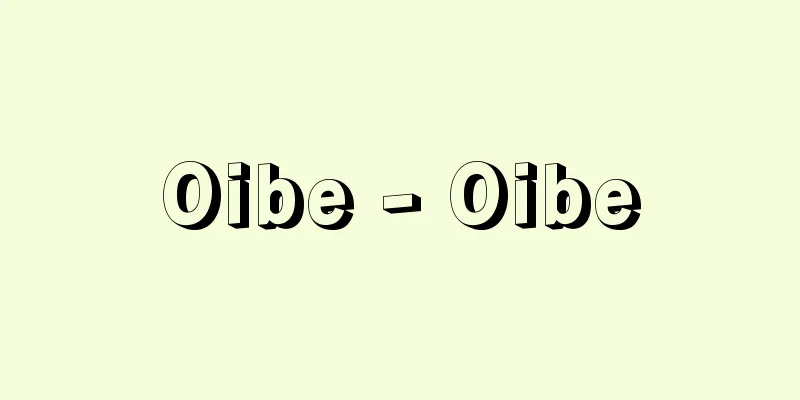Mysterious - Yugen

|
The use of the word yugen dates back to the Later Han Dynasty in China, but what is noteworthy is its usage in subsequent Chinese translations of Buddhist scriptures, with Zhiyi of the Sui dynasty explaining it as "subtle and difficult to grasp" (Commentary on the Diamond Sutra), and Fazo of the Tang dynasty explaining it as "very profound" (The Avatamsaka Sutra Exploration Record). Both of these have a meaning that is profound and difficult to understand in Buddhist law, but even in Japan up until the end of the Heian period, the usage did not deviate from this original meaning at all, not just in Buddhist scriptures. In the case of poetry theory, not only the preface to the Kokinshu, which describes the mystical atmosphere of ancient poetry as "entering the mysterious world of profound mystery," and Mibu Tadamine's Ten Types of Waka Style, which defines the attribute of the excellent "kojyoutai" style of poetry as "entering the mysterious world of righteousness," but also the usage of the term yugen by Fujiwara no Shunzei (1114-1204), who called the unique technique of layering various images and moods, and the fact that the style of poetry of the early Fujiwara no Teika (1162-1241) and others, who pursued this technique in search of "the lingering emotions that cannot be expressed in words, the mood that cannot be seen in form," was referred to as the "style of yugen" (Mumyosho), can all be explained by this original meaning. Therefore, yugen had not yet emerged as an aesthetic theory, and it was not until the latter half of the Kamakura period that it came to be understood to mean grace or elegance. Examples include Nijō Tameyo (1251-1338) who spoke of "elegant beauty and mysteriousness" in opposition to "worldly and ordinary," and Teika's forged work, Sangoki, which defined the "yugen style," one of the ten styles (a classification of 10 types of poetry), as "gentle, soft lines." "Elegance" and "gentleness" have long been considered the essence of poetry, and by incorporating this, yugen is established as the aesthetic ideal of poetry. The theory of yugen after the Northern and Southern Courts period built on this and moved in the direction of further emphasizing elegance. Shōtetsu (1381-1459) studied not only Teika's forgeries but also directly from Teika's early claim of "lingering emotion and allure" (Kindai Shuka), and arrived at the most magnificent yugen of the Middle Ages. In his theory of linked verse, Nijō Yoshimoto (1320-88) advocated Shunzei's yugen, but in particular expounded on the yugen of "flower fragrance" (Jikmon Saihisho). Zeami's (1363-1443) theory of Noh also defines yugen as "a beautiful and gentle body" (Hanakyō), but also emphasizes "flowers", but eventually goes beyond "flowers" to "coolness". Shinkei's (1406-75) theory of linked verse took this direction to the extreme, and while succeeding Shōtetsu, he pursued the "gentleness" that is the essence of yugen in the direction of "lustre of the heart," arriving at a "thin and cold" beauty. This was an achievement achieved by basing yugen on the foundation of Buddhist training in the comfort of one's heart, but the rigorous introspection of the author's state of mind is in fact none other than the problem of "having a mind" that has been at the foundation of yugen theory since Shunzei and Teika, and Shinkei's yugen is also notable for being the most profound reflection on having a mind. [Yutaka Tanaka] "The Formation of the New Kokin Poetry Style by Haruo Fujihira (1969, Meiji Shoin)" "Research on Medieval Literature by Yutaka Tanaka (1969, Hanawa Shobo)" [Reference] |Source: Shogakukan Encyclopedia Nipponica About Encyclopedia Nipponica Information | Legend |
|
幽玄の語の用例は中国の後漢(ごかん)にさかのぼるが、注目されるのは以後の漢訳仏典の用法で、隋(ずい)の智顗(ちぎ)ぎはこの語を「微妙難測(みみょうにしてはかりがたし)」(金剛般若経疏(こんごうはんにゃきょうそ))、唐の法蔵は「甚深(じんじん)」(華厳経(けごんぎょう)探玄記)と解説している。いずれも、仏法の深遠でたやすくは理解できない意味であるが、日本でも平安末期までの用法は仏典に限らず、およそこの原義を離れない。歌論の場合、上古の歌の神秘な趣(おもむき)を「興幽玄に入る」と評した『古今(こきん)集』序や、優れた歌体である「高情体」の属性を「義幽玄に入る」と規定した壬生忠岑(みぶのただみね)の『和歌体十種(わかのていじっしゅ)』はもとより、種々の映像や情調を重層させる特異な手法を幽玄とよんだ藤原俊成(しゅんぜい)(1114―1204)の用法も、またこの手法を追究して「詞(ことば)に表れぬ余情(よせい)、姿に見えぬ景気(けいき)(けはひ)」を求めた初期の藤原定家(ていか)(1162―1241)らの歌体が「幽玄の体」(無名抄(むみょうしょう))とよばれたのも、すべてこの原義から説明できる。したがって幽玄はまだ審美論としては現れず、それが優美・典雅などの意味で理解されるようになるのは鎌倉期も後半である。 二条為世(ためよ)(1251―1338)が「世俗凡卑」に対して「花麗幽玄」(延慶両卿訴陳状(えんきょうりょうきょうそちんじょう))といい、定家偽書の『三五記(さんごき)』が十体(歌体を10種に分類したもの)の一つである「幽玄体」を「やさしく物柔らかなる筋」と規定したなどがそれである。「優(いう)」「やさし」は早くから歌の本質とされていたもので、これを取り込むことによって、幽玄は歌の審美的理想として定位される。南北朝以後の幽玄説はこのうえにたって、さらに華麗さを強める方向に進んだ。正徹(しょうてつ)(1381―1459)は定家偽書ばかりでなく、直接に定家の初期の主張であった「余情妖艶(ようえん)」(近代秀歌)に学んで中世においてもっとも華麗な幽玄に到達し、連歌論でも二条良基(よしもと)(1320―88)は、俊成の幽玄を標榜(ひょうぼう)しながらとくに「花香(はなが)」(十問最秘抄)ある幽玄を説いている。また世阿弥(ぜあみ)(1363―1443)の能楽論も、幽玄を「美しく柔和なる体」(花鏡)と規定する一方「花」を力説しているが、やがて「花」を越えて「冷え」へと進む。この方向を徹底させたのが心敬(しんけい)(1406―75)の連歌論で、正徹を継承しながら幽玄の本質である「やさし」さを「心の艶(えん)」の方向に追究して「冷え痩(や)せ」た美に到達した。これは、幽玄を仏教的な心地修行の基礎のうえに置くことによって得られた成果でもあるが、しかし作者の心のあり方に向けたその厳しい内省は、実は俊成・定家以来、幽玄論の根本にあった「有心(うしん)」の問題にほかならず、心敬の幽玄はまた有心についてもっとも深く思索したものとして注目される。 [田中 裕] 『藤平春男著『新古今歌風の形成』(1969・明治書院)』▽『田中裕著『中世文学論研究』(1969・塙書房)』 [参照項目] |出典 小学館 日本大百科全書(ニッポニカ)日本大百科全書(ニッポニカ)について 情報 | 凡例 |
<<: Limited company - Yugenkaisha
Recommend
Crane ship - Kuransen
A ship equipped with a large crane, specialized i...
Organization of Petroleum Exporting Countries
…Abbreviation for Organization of Petroleum Expor...
Great Lakes
Five large freshwater lakes in the eastern part o...
chartered company
…There were some industries, such as mining, that...
Japanese History - Nihon Isshi
A history book covering the early Heian period. I...
Penicillium citreoviride
...There are three types of mold that produce tox...
Okunoshima - Okunoshima
Okunoshima is an island in the Geiyo Islands in t...
Chernigov
The capital of Chernigov Oblast in northern Ukrai...
Inkjet plotter
...In a computer, the device that takes in inform...
Donen, S.
...During wartime, musical films became a kind of...
Discarded soldier - Yes
A wounded soldier who lost the ability to live du...
Ando Tsuguaki
1747-1793 A samurai from the mid to late Edo peri...
Public telephone - public telephone
A telephone installed in an easy-to-use location ...
Piperidine
Hexahydropyridine. C 5 H 11 N (85.15). Also calle...
epileptische Wesensänderung (English spelling)
...Hemispheric atrophy may also occur. [Epileptic...









